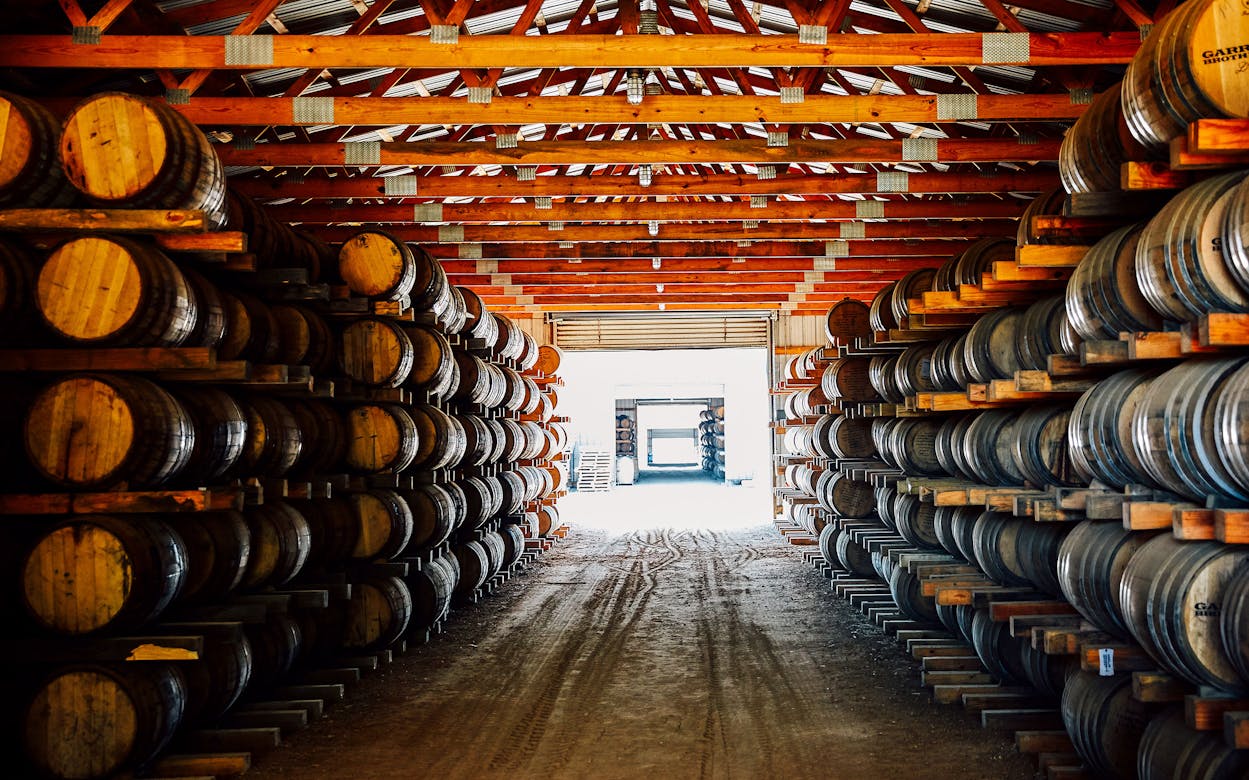A man walks into a bar. “Bartender,” he says. “A shot of Texas whiskey!”
What happens next? Well, that depends on what year it is. If it’s anytime before 2009, the bartender either stares at you mutely or laughs right in your face. If it’s 2010, and it’s a decent cocktail bar, the answer might be: “Which of the two do you prefer?” And today? Depending on the bar and the city, the bartender could hand you a whole list of Texas pours.
It’s a story Eric Benson told for this publication (“The Great Texas Whiskey Boom”) in November of 2019. Now, less than two years later, there’s Texas Whiskey: World-Class Bourbons, Premier Ryes, and New Single Malts From the Lone Star State (Cider Mill Press, 2021), a five-hundred-page tome from Dallas author Nico Martini. The book celebrates, as he puts it, “one of the tallest tales in the spirits world” (yeah, yeah, everything’s bigger). Texas whiskey distilleries, which didn’t—and because of state law, couldn’t—exist twelve years ago, have become almost as ubiquitous as new-school barbecue, and with “grain to glass” products that are just as good.
Hyperbole? Not to Martini, who calls himself “the biggest Texas whiskey apologist you’ve ever met,” and certainly not to Dan Garrison, whose Garrison Brothers Distillery produced the state’s first bourbon. “I think Texas is the next great whiskey state,” Garrison says in the book. “I think that the products coming out of Texas currently are far superior to anything being produced in Kentucky today.”
Part industry profile, part tasting notebook, and 100 percent—or should I say, 200-proof—Texas whiskey boosterism, Martini’s guide, with photos by John Whalen, is as lavish as a coffee-table book but small enough to fit into the glove box of your F-150. It tells the story of, and highlights nearly every single bottling from, 34 Texas distilleries in four regions, loosely delineated as North Texas, Central Texas, Hill Country, and South Texas and Gulf Coast. Among those 34 are distilleries that produce and bottle whiskey from outside of Texas—sometimes exclusively, sometimes in addition to their homegrown juice—and are deemed eligible for inclusion as long as they don’t obfuscate that fact. One of the book’s introductions is by Spencer Whelan, executive director of the Texas Whiskey Association, which has a five-point verification process for “Certified Texas Whiskey” requiring that every step of its making happen within Texas. The TXWA currently has twenty members.
Texas Whiskey is not a history book. “I’d like to tell you about the history of Texas whiskey, but I can’t,” Martini writes. “It’s not ready.” It’s also not a work of criticism. Martini, whose first book, Texas Cocktails, was published in 2018, is not merely an unabashed enthusiast of Texas whiskey—he’s also in the whiskey business. Grayson Whiskey, Martini’s company with Brandon Davis and former major league baseball player (and Arlington native) Vernon Wells, is devoted to the art of blending, and it released its first bottle not long before Texas Whiskey’s publication. The cask-strength bourbon includes barrels from Ironroot Republic Distilling in Denison, Balcones Distilling in Waco, and Five Points Distilling/Lone Elm Whiskey in Forney. And yes, it’s in the book (pages 100–104), as are each of those distilleries.
Which makes Texas Whiskey a work of passion, expertise, and access, if not detachment and perspective. It’s a celebration of Texas whiskey’s diversity, in terms of what gets made (bourbon, single malt, rye whiskeys, wheat whiskeys, rice whiskeys, and other grains) and how it’s made, and under what circumstances (especially given the state’s huge range of climates, which affects both growing grain and aging barrels). It’s also a celebration of the industry’s youth, which means there are no rules or traditions to reflexively obey.
To use a football metaphor—and there are more than a couple in this book—Texas distillers are like Hal Mumme and Mike Leach when they dreamed up the air raid offense: surprising, innovative, and viewed with skepticism by the game’s establishment. There are distilleries that use rainwater, distilleries that have adopted French winemaking techniques, and distilleries run by guys with advanced degrees in both chemistry and farming.
Martini spent much of the past two years visiting his subjects all around the state, and his knowledge and connections give him lots of insight into process, as well as the ability to get the whiskey makers talking. And in some cases, writing: there are first-person essays from the likes of Garrison, Chris Seals of Still Whiskey, and Firestone & Robertson’s Rob Arnold, who has a doctorate in plant breeding and genetics from Texas A&M. There are also sidebars and interstitial sections covering Texas malting houses and a seed company, plus a final section of shopping/eating/drinking recommendations for regions covered.
The book seems written for a fairly savvy readership, one that knows not only something as remedial as the fact that bourbon doesn’t have to come from Kentucky, but also what they already like in a whiskey based on mash bills, distillation styles, and tasting notes like “Band-Aids” or “Atomic Fireball up front” or “sotol.” It’s also not necessarily a consumer guide. With a few exceptions, no one bottle is more recommended than any other (let alone not recommended) and there’s no real frame of reference for new whiskey enthusiasts (i.e., “if you’re usually buying Maker’s Mark, try this!”).
Martini also assumes that anyone shelling out 35 bucks for this book already knows the backstories, some more convoluted and controversial than others, of such quintessential Texas distilleries as Garrison Brothers, Balcones, and Firestone & Robertson. At one point in the Garrison chapter, Martini writes “polarizing whiskey be damned” sans explanation; it took a little research to learn that veteran Kentucky bourbon writers Fred Minnick and Lew Bryson included Garrison Brothers’ Cowboy Whiskey on their list of the “10 worst whiskeys of the decade.” “Polarizing” was their adjective.
The Texceptionalism can also be poured on a bit thick. Dan Garrison’s boast aside, the book gives the impression that Texas and Texas alone is giving Kentucky a run for its money. Martini writes as though Texas is uniquely plucky and tradition-busting, when innovations are also happening in other states. It’s just that Texas has a whole lot more of everything. (And, to be fair, it’s a Texas book.)
“If we’re this good at making whiskey now, just wait until we’re 200 years in,” Martini writes. And later: “If you don’t think we’re the best, you will soon enough, and if you don’t, well, bless your heart!” That well-placed twist of the linguistic knife aside, Martini’s use of the first-person plural makes it clear that he is rooting for the Texas whiskey business almost as if it were the Dallas Cowboys or the University of Texas Longhorns. But why not? At least the distilleries are doing better than the football teams.








